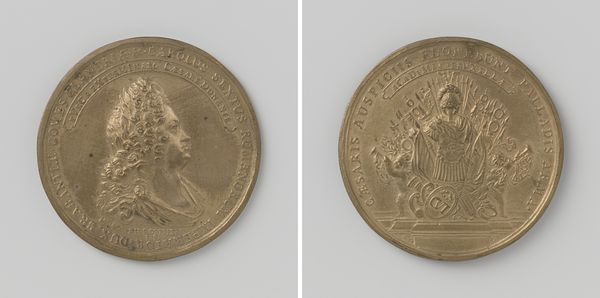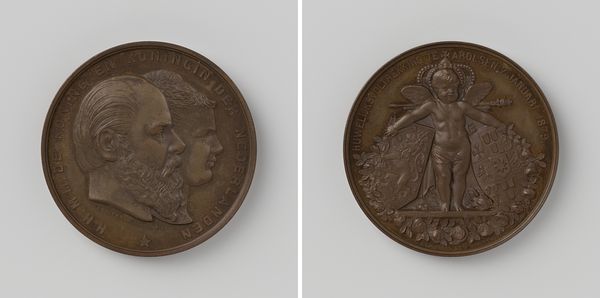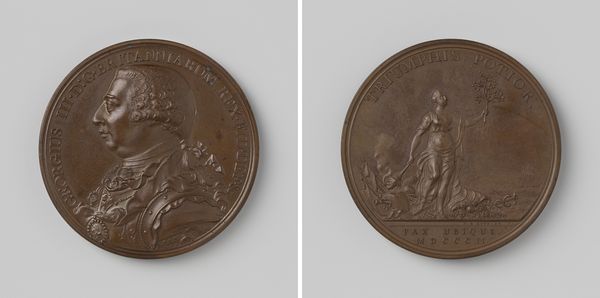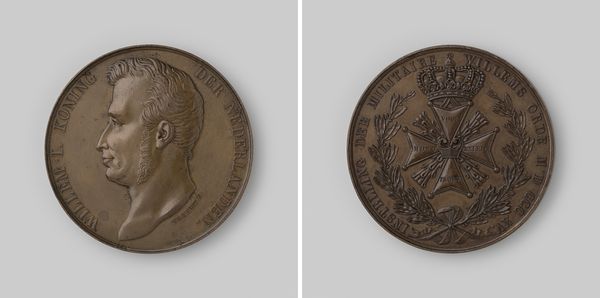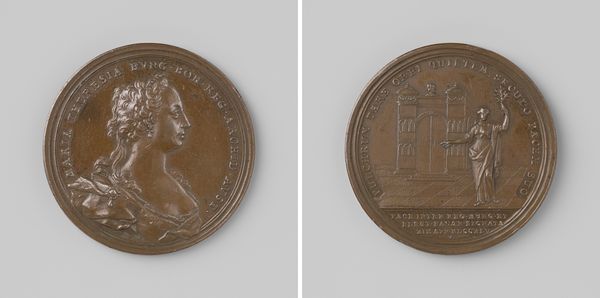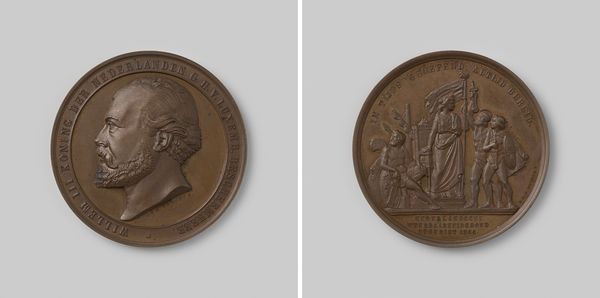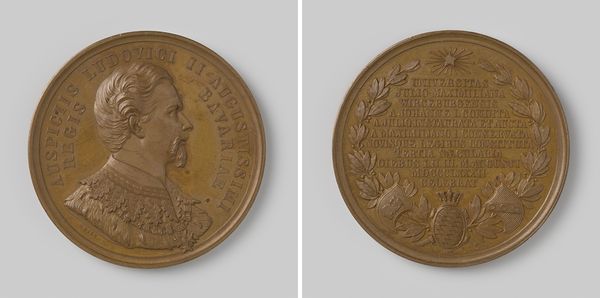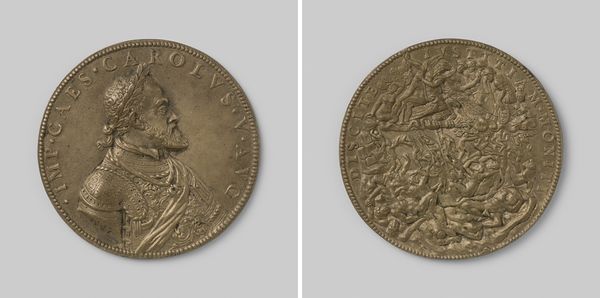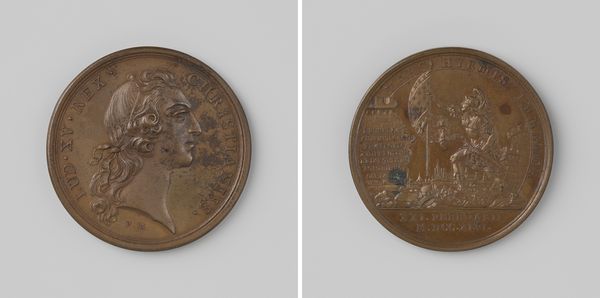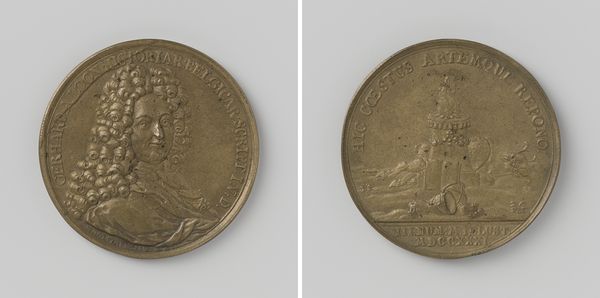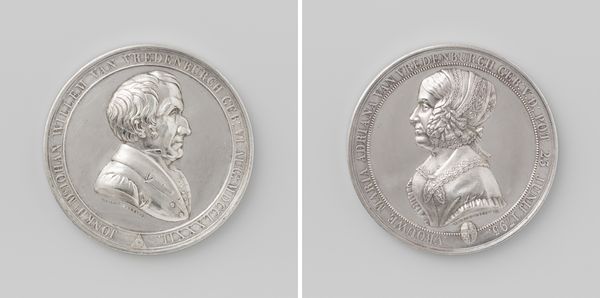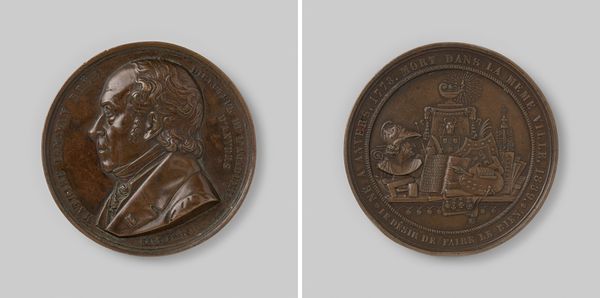
Dimensions: diameter 6.2 cm, weight 107.77 gr
Copyright: Rijks Museum: Open Domain
Curator: Here we have a bronze relief sculpture titled "Kardinaal de Mazarin" crafted by Jean (II) Warin sometime between 1900 and 1980, showcasing a Baroque style. Editor: It's intriguing. My first thought is how cleverly it uses layering and varying depths to compress narrative—almost a miniature epic! Curator: Indeed. Examining the portrait side, observe the meticulous rendering of Cardinal Mazarin’s profile, sharply delineated against the smooth background. The texture of his garments, contrasted with his skin, generates visual interest. Editor: That’s true, but turning our attention to the relief on the other side, we can consider its cultural significance in 17th-century France. The rough-hewn rocky isle amid a turbulent sea might be symbolic of political unrest. Perhaps an allusion to Mazarin’s struggles. Curator: An astute observation. And the Latin inscription "QVANTO M FRVSTRA ET MVRMVRE QVANTO!" translates to "How Great is the Useless Murmuring!". Consider how its placement around the edges further emphasizes the central images through structuralist theory. Editor: Exactly! The murmuring evokes a sense of discontent or dissent, situating this medal within a period defined by socio-political dynamics. Mazarin’s policies fueled uprisings—it is crucial to decode the medal through the lens of this unrest. Curator: However, one should avoid reducing such layered composition to a merely socio-political representation. One must appreciate its formal execution! The interplay between depth, light, and form are striking. Editor: I concede to the powerful craftsmanship. This medal encourages multiple levels of interpretation. Curator: Precisely! And hopefully we offered our listeners diverse ways to start engaging with the visual object. Editor: Yes, and by investigating this artwork through formal, historical, and philosophical angles, the intersectional nature of art historical analysis should be evident.
Comments
No comments
Be the first to comment and join the conversation on the ultimate creative platform.
